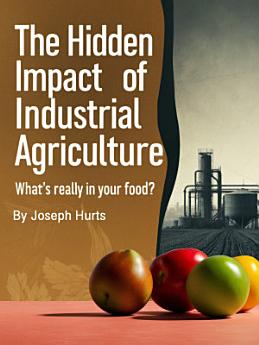The Hidden Impact of Industrial Agriculture: What's Really in Your Food?
About this ebook
Pesticide residues in conventionally grown produce represent one of the most widespread forms of chemical contamination in the modern food supply, with government testing consistently finding detectable levels of multiple pesticides in fruits and vegetables sold in supermarkets. These chemicals are designed to kill insects, weeds, and fungi by disrupting biological processes that are often similar to those found in human physiology, raising concerns about their effects on human health even at levels considered safe by regulatory agencies.
The concept of pesticide safety based on individual chemical testing ignores the reality that people are exposed to combinations of multiple pesticides simultaneously, creating potential synergistic effects that have not been adequately studied or regulated. The "cocktail effect" of pesticide combinations may produce health impacts that are greater than the sum of their individual effects, while regulatory systems continue to evaluate chemicals in isolation rather than considering the complex mixtures that characterize real-world exposure.








